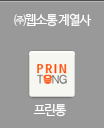Five Fascia Replacement Lessons From The Pros
페이지 정보
작성자 Alphonse 작성일25-07-14 22:25 조회7회 댓글0건본문
The Best Fascia Replacement: A Comprehensive Guide
Fascia boards play an important function in the overall integrity and visual appeal of a home. As the protective edge along the roofline, fascia helps to protect a home from weather condition elements while likewise supporting the roof's gutter system. Gradually, exposure to wetness, bugs, and environmental factors can cause wear and harm, triggering the need for fascia replacement. This article supplies an in-depth look at the very best fascia replacement materials, their benefits, installation ideas, and answers to regularly asked questions.
Comprehending Fascia Materials
Before diving into the very best fascia replacement materials, it is vital to acknowledge the main types readily available on the market. Each alternative has distinct characteristics, advantages, and drawbacks.

Typical Fascia Replacement Materials
1. Wood:
- Pros: Natural appearance, easy to paint or stain, excellent insulation.
- Cons: Prone to rot, needs regular maintenance, vulnerable to insects.
2. Vinyl:
- Pros: Low maintenance, rot-resistant, offered in lots of colors.
- Cons: Can warp under high heat, not as long lasting as other products.
3. Aluminum:
- Pros: Lightweight, resistant to rust, does not warp or crack.
- Cons: Can be dented, restricted color options unless painted.
4. Fiberglass:
- Pros: Durable, resistant to rot and pests, offered in custom-made styles.
- Cons: Higher initial expense, requires professional installation.
5. Composite:
- Pros: Made from recycled products, resistant to rot, can simulate wood's look.
- Cons: Often more expensive than wood, can fade over time.
Suggested Fascia Replacement Materials
The following table summarizes the advised fascia replacement materials along with their essential functions:
| Material | Toughness | Maintenance | Visual Appeal | Expense Range |
|---|---|---|---|---|
| Wood | Moderate | High | High | ₤ 3 - ₤ 15 per foot |
| Vinyl | Moderate | Low | Moderate | ₤ 2 - ₤ 10 per foot |
| Aluminum | High | Low | Moderate | ₤ 4 - ₤ 12 per foot |
| Fiberglass | Very High | Low | High | ₤ 8 - ₤ 20 per foot |
| Composite | High | Low | Extremely High | ₤ 5 - ₤ 15 per foot |
Factors to Consider When Choosing Fascia
When picking the ideal fascia replacement material, numerous factors ought to influence the choice:
- Climate: Areas with high humidity or temperature extremes may need more durable choices, such as aluminum or fiberglass.
- Spending plan: Understanding the overall expense, including both products and installation, is necessary. Lower in advance expenses may feature greater long-lasting maintenance costs.
- Visual Preference: Homeowners should think about the architectural design of their home and choose products that boost its look.
- Maintenance Requirements: Some products need regular painting, sealing, or repairs, while others are virtually maintenance-free.
Installation Tips for Fascia Replacement
Changing fascia boards can be a DIY task or might require professional assistance, depending on the homeowner's comfort level and ability set. Here are some installation suggestions:
- Safety First: Always wear safety gear, including gloves, goggles, and a construction hat. Usage steady ladders and follow correct ladder security protocols.
- Preparation: Remove the old fascia carefully to avoid damaging surrounding structures. Inspect for underlying damage to the roofline or rafters before setting up the new fascia.
- Determining Accurately: Ensure that each piece of fascia is cut to the correct length. An accurate fit is vital to prevent gaps and boost the aesthetic appeal.
- Proper Nailing Techniques: Use corrosion-resistant nails or screws to secure the fascia in location. Follow maker guidelines for spacing.
- Sealing: If utilizing wood materials, apply premium-quality sealant to protect against moisture seepage.
Regularly Asked Questions
1. How typically must fascia be replaced?Fascia typically
needs to be replaced every 20 to 30 years, depending upon the product used and the ecological conditions. Routine assessments can assist determine problems early. 2. Can fascia replacement be a DIY
project?Yes, lots of property owners can effectively replace fascia boards themselves if they have the right tools and skills. Nevertheless, complex setups or underlying roof damages might require professional help. 3. How much does fascia replacement normally cost?The cost of fascia replacement varies significantly based upon the material selected, the size of the task, and labor costs
. House owners can expect to pay anywhere from ₤ 2 to ₤ 20 per linear foot for products and extra labor charges. 4. What indications suggest that fascia needs replacement?Common indications include noticeable rot or decay, sagging boards, insect invasions, or gutters that are pulling away from the roofline. 5. How can I lengthen the life of my fascia?Regular maintenance, such as cleaning up seamless gutters
, inspecting for damage, and using protective sealants to wood materials, can extend the life-span of fascia boards.

Picking the very best fascia replacement material is vital for maintaining the structure and beauty of a home. By weighing the advantages and downsides of different materials and thinking about aspects such as climate
and maintenance requirements, homeowners can make educated decisions. Whether the job is a DIY venture or needs professional support, proper choice and installation of fascia can improve a home's value and curb appeal for several years to come.
댓글목록
등록된 댓글이 없습니다.




















